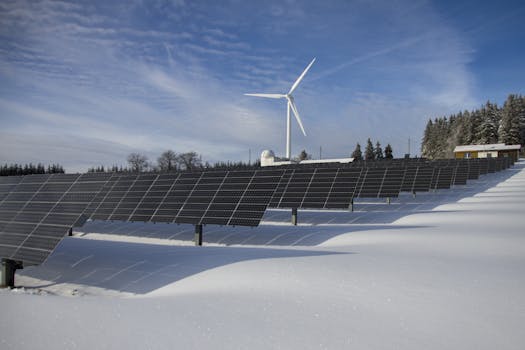Essential Differences Between Photovoltaic Panels for Residential and Industrial Use
As the world increasingly turns to renewable energy sources, photovoltaic (PV) panels have emerged as a popular choice for both residential and industrial applications. However, the requirements and specifications for these two categories of solar panels differ significantly. Understanding these differences is crucial for homeowners and businesses alike, as it can influence the efficiency, cost, and overall effectiveness of solar energy systems.
1. Size and Scale of Installation
One of the most apparent differences between residential and industrial photovoltaic panels is the scale of installation. Residential systems are typically designed to meet the energy needs of a single household, while industrial systems cater to large-scale energy demands.
- Residential Panels: Usually consist of 10 to 20 panels, generating between 3 kW to 10 kW of power.
- Industrial Panels: Can involve hundreds or thousands of panels, producing anywhere from 100 kW to several megawatts (MW) of power.
This difference in scale not only affects the number of panels required but also the type of mounting systems and inverters used. Residential systems often utilize roof-mounted panels, while industrial systems may employ ground-mounted arrays or solar farms.
2. Panel Efficiency and Technology
The efficiency of photovoltaic panels is another critical factor that varies between residential and industrial applications. Efficiency refers to the amount of sunlight converted into usable electricity.
- Residential Panels: Typically have an efficiency range of 15% to 22%. Homeowners often prioritize aesthetics and space constraints, leading to the use of high-efficiency panels.
- Industrial Panels: Generally feature higher efficiency ratings, often exceeding 22%, as they are designed for maximum output and cost-effectiveness over large areas.
Moreover, industrial panels may utilize advanced technologies such as bifacial designs, which capture sunlight from both sides, enhancing overall energy production.
3. Cost Considerations
Cost is a significant factor influencing the choice of photovoltaic panels for both residential and industrial applications. The initial investment, maintenance costs, and return on investment (ROI) can vary widely.
- Residential Costs: The average cost of residential solar panel installation ranges from $15,000 to $30,000, depending on the system size and local incentives.
- Industrial Costs: Industrial installations can range from $100,000 to several million dollars, but they benefit from economies of scale, often resulting in a lower cost per watt.
Additionally, industrial users may have access to financing options and tax incentives that are not available to residential customers, further influencing the overall cost structure.
4. Regulatory and Permitting Challenges
The regulatory landscape for solar energy can differ significantly between residential and industrial installations. Understanding these regulations is essential for a successful installation.
- Residential Regulations: Homeowners typically face less stringent permitting processes, although local zoning laws and homeowner association rules may apply.
- Industrial Regulations: Industrial installations often require comprehensive environmental assessments, grid interconnection agreements, and compliance with state and federal regulations.
These regulatory differences can impact the timeline and complexity of installation, making it crucial for businesses to engage with legal and regulatory experts.
5. Maintenance and Longevity
Maintenance requirements and the expected lifespan of photovoltaic panels also differ between residential and industrial applications. While both types of panels are designed to last for 25 years or more, the maintenance needs can vary.
- Residential Maintenance: Homeowners may need to clean panels periodically and check for shading from trees or buildings.
- Industrial Maintenance: Industrial systems often require more rigorous maintenance schedules, including regular inspections and performance monitoring to ensure optimal efficiency.
Moreover, industrial installations may have dedicated maintenance teams, while residential systems often rely on third-party service providers.
Conclusion
In summary, the essential differences between photovoltaic panels for residential and industrial use are significant and multifaceted. From the scale of installation and panel efficiency to cost considerations and regulatory challenges, each category has unique requirements that must be understood for effective implementation. Homeowners typically prioritize aesthetics and efficiency, while industrial users focus on maximizing output and minimizing costs. By recognizing these differences, stakeholders can make informed decisions that align with their energy needs and financial goals, ultimately contributing to a more sustainable future.
